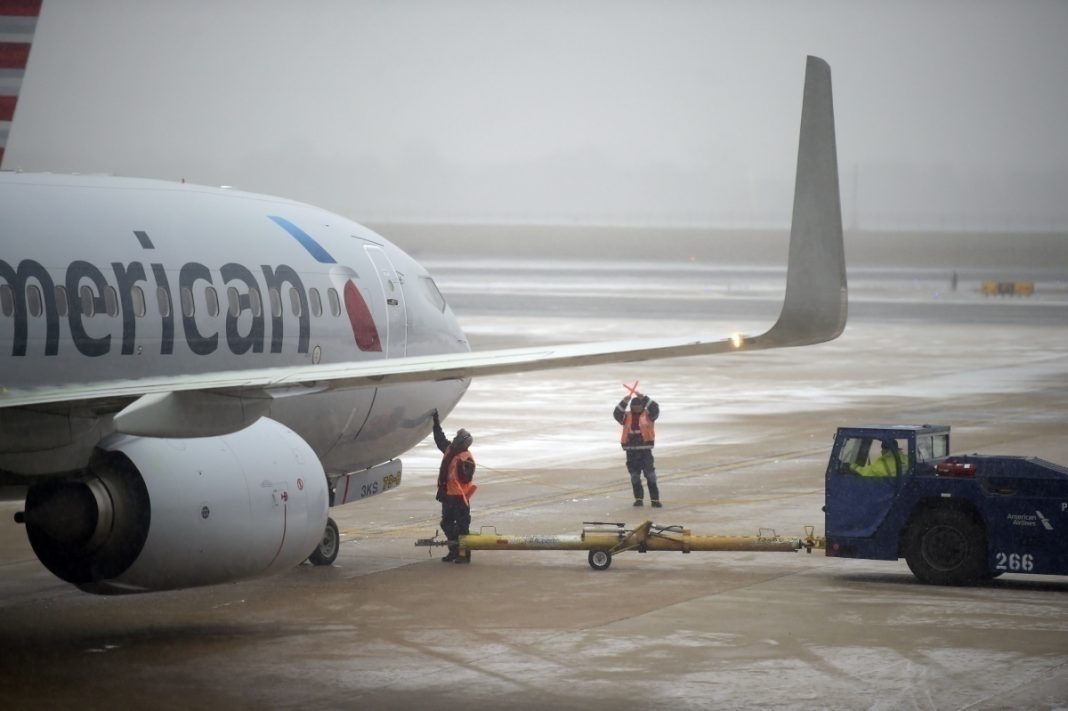We have all seen aircraft being de-iced at an airport in winter or had to wait on the ground before departure while this takes place. Have you ever wondered though how this happens, and why airlines do this? This article explores how and why it happens.

Why de-ice an aircraft?
The wings are the critical part of an aircraft that is de-iced before flight, but the tail and parts of the fuselage will also be treated. The engines as well should be kept ice-free, but internal heat and air help prevent this.
Allowing ice to build up would not automatically impede flight, but it would affect safety and aircraft performance in a number of ways:
- Ice on the wings would affect the aerodynamics, potentially reducing lift or making flight less stable. Anything out of place or unexpected can affect the airflow over the wings, and of course, should be avoided.
- It would add weight to the aircraft, reducing performance and effecting calculations of fuel and range.
- Ice or snow could block vents or stop sensors from working correctly.
- And finally, any falling or breaking ice could damage the aircraft engines or airframe structure.

Preparing to de-ice
Snow and ice can cause massive disruption. Having a quick and efficient process in place to deal with this is essential in busy airports.
De-icing aircraft on the ground is a well-defined process. The aircraft is first inspected to check for ice accumulation. If de-icing is required, a truck with de-icing equipment will be called.
The aircraft will be positioned in a suitable area, with adequate drainage to collect the liquid and drain away, keeping it away from the ground watercourse. Sometimes this can be at the gate area, and sometimes the aircraft is moved to a dedicated area, usually closer to the departure runway.
Spraying the aircraft
The aircraft will then be sprayed with a de-icing solution. This is usually a heated, glycol-water solution, and will melt any ice accumulation.

Additionally, anti-icing solutions can be applied too if there is a high chance of more ice forming before taxi and take-off. This is usually propylene glycol. Ethylene glycol is also used but is less common commercially as it contains more toxins. With a freezing point of -around -45 degrees Celsius, these will prevent any further precipitation from freezing in all but the most extreme conditions.

The crew will spray the wings from the wingtips inward, avoiding sensitive areas. The de-icing solution also contains a dye that will help indicate which areas have already been treated.
Timing is important too, when de-icing. Once an aircraft has been treated, it will have a certain ‘holdover time’ where it should start its flight. The treating chemicals will help prevent ice re-forming, but only for a period of time. Once airborne, the gel-like solutions will disperse so as not to affect the wing performance.
In-flight de-icing
As well as pre-flight de-icing, all large aircraft have systems for de-icing in flight. At high altitude, any moisture that accumulates on aircraft wings can freeze, and this can have similar safety and performance implications.
The most commonly used system passes hot air from the engines through a network of small tubes beneath the surface of the wings and the aircraft tail. This raises the temperature sufficiently to melt any ice that forms.

On smaller aircraft, there are also systems which use antifreeze solutions on the wings and propellers, or electrical systems which used heated rubber surfaces.
Would you like to share any knowledge or stories related to aircraft icing? Feel free to share in the comments.
[ad_2]
Source link


